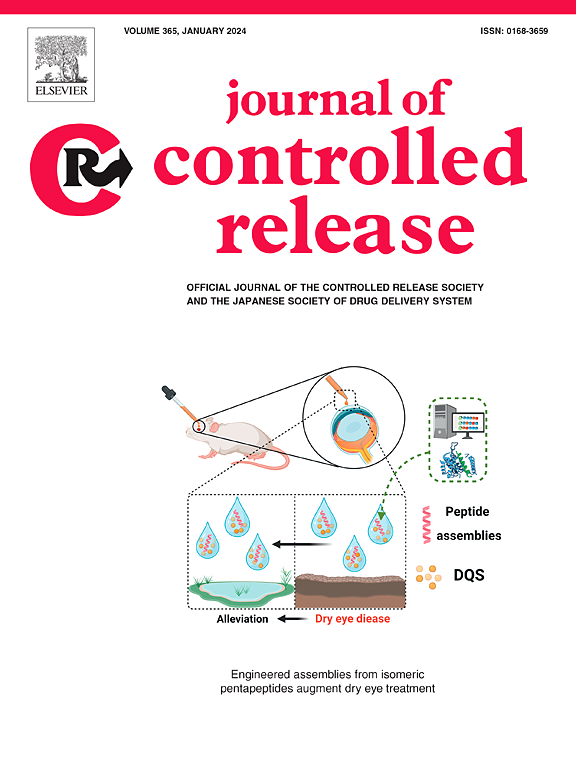Enhancement and characterization of nanoparticle diffusion in biological tissues by magnetic heating and oscillation
IF 10.5
1区 医学
Q1 CHEMISTRY, MULTIDISCIPLINARY
引用次数: 0
Abstract
Given the unsatisfactory delivery efficiency of nanoagents to target lesions in biological systems, this study proposed a magnetic field regulation method aimed at boosting nanoparticle (NP) diffusion in porous tissues by leveraging both magneto-thermal effects and magnetic oscillation. In vitro experiments using pork liver tissues and in vivo experiments on fibrosarcoma tumors in mice were conducted. Our study achieved quantitative characterization of NP diffusion, detailing the temporal and spatial distribution of NPs. The results show that the improvement of intratumor NP diffusion driven by an oscillating magnetic field (30 mT, 15 Hz), was notably greater than that due to the magneto-thermal effect from a high-frequency alternating magnetic field (27 kA/m, 115 kHz). Under magnetic oscillation, the overall diffusivity of the NPs in fibrosarcoma tumors was 4.45 times greater than that under untreated conditions. NP diffusivity decreased with increasing diffusion time and length due to the concentration dependence of diffusivity and was strongly influenced by tissue structure.

求助全文
约1分钟内获得全文
求助全文
来源期刊

Journal of Controlled Release
医学-化学综合
CiteScore
18.50
自引率
5.60%
发文量
700
审稿时长
39 days
期刊介绍:
The Journal of Controlled Release (JCR) proudly serves as the Official Journal of the Controlled Release Society and the Japan Society of Drug Delivery System.
Dedicated to the broad field of delivery science and technology, JCR publishes high-quality research articles covering drug delivery systems and all facets of formulations. This includes the physicochemical and biological properties of drugs, design and characterization of dosage forms, release mechanisms, in vivo testing, and formulation research and development across pharmaceutical, diagnostic, agricultural, environmental, cosmetic, and food industries.
Priority is given to manuscripts that contribute to the fundamental understanding of principles or demonstrate the advantages of novel technologies in terms of safety and efficacy over current clinical standards. JCR strives to be a leading platform for advancements in delivery science and technology.
 求助内容:
求助内容: 应助结果提醒方式:
应助结果提醒方式:


